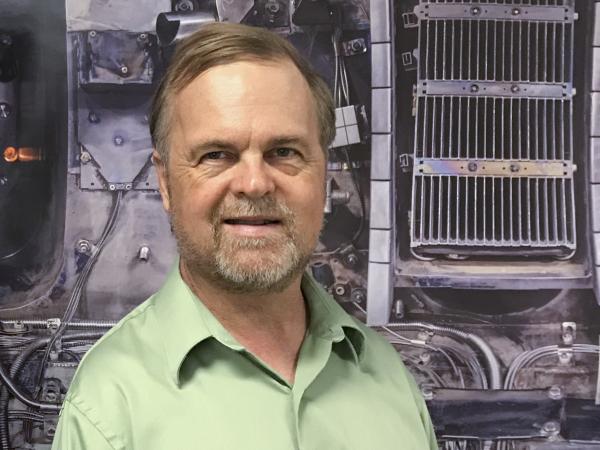
PSFC principal research scientist John Wright
Photo: Paul Rivenberg
PSFC receives $2.78 M from new DoE initiative to accelerate fusion progress.
September 28, 2020
PSFC principal research scientist John Wright will lead an exploration of how machine learning can accelerate radio frequency modeling for current drive prediction in tokamaks. This will support a researcher’s ability to respond in real time to potentially destabilizing fluctuations in a fusion experiment. Joining him will be collaborators from Princeton Plasma Physics Laboratory (PPPL) led by Syunichi Shiraiwa and Lawrence Berkeley National Laboratory (LBL) led by Wes Bethel.
The $2.78 funding from the U.S. Department of Energy (DOE) is part of a 3-year initiative to support artificial intelligence and machine learning research on fusion energy. The effort, which will provide up to $21 M in funding to multiple awardees, is part of the DOE’s Scientific Discovery through Advanced Computing (SciDAC) program, created to bring together many of the nation's top researchers to develop new computational methods for “automating data analysis workflows and enabling real-time control algorithms.”
A tokamak is a toroidal device that confines hot plasma fuel long enough and at temperatures high enough for fusion to occur. Because the charged particles in a plasma will follow magnetic field lines, the device uses magnets, wrapped around the donut-shaped vacuum chamber, to confine and direct the plasma away from the chamber walls. Most tokamaks are able to sustain fusion reactions in pulses of a few seconds, but advanced tokamak concepts seek longer, “steady state” operation, from which to draw energy in a future fusion power plant.
Tokamaks require a toroidal current for operation, which can be created by transformers. But in a steady state device, the current needs to be augmented by other sources, so called “external actuators.” These include radio frequency systems, which use radio and microwaves from antennas located within the vacuum chamber. To be effective and stable, a steady state fusion device must be able to predict what is happening in the current drive, so it can respond in real time.
“During a few second or many second discharge you want to change how the radio frequency actuator is operating based on what happens in the experiment as it’s running,” says Wright. “That requires being able to run these models in almost millisecond time scales. A couple thousandths of a second.”
Researchers could run physics codes to understand what is going on in the plasma, but they are too slow to allow an effective and speedy response. Using machine learning, researchers can create a “surrogate model”, essentially a large data base of prior simulations from which to interpolate what the result would be from running the physics code.
“A surrogate model can be extremely fast because it is interpolating prior results rather than calculating them from scratch,” says Wright. “It develops an answer essentially instantaneously. The real time control system can then make that change in the operation of the tokamak to maintain the stability.”
Wright will be joined by PSFC research scientist Greg Wallace on the project. They look forward to working with their colleagues from LBL and PPPL, who have expertise in machine learning and modeling. Together they plan not only to establish a speedy surrogate model, but to accelerate the physics codes themselves.
“We would be validating the models against existing experimental data from other tokamaks such as EAST in China or KSTAR in Korea, and perhaps applying it to ITER. The important thing is we could project to the next stage so called ‘advanced tokamak’ operation, which would likely have some sort of RF actuator to adjust the current profile.
Topics: Plasma science, High field magnets, Plasma theory & simulation, Plasma turbulence